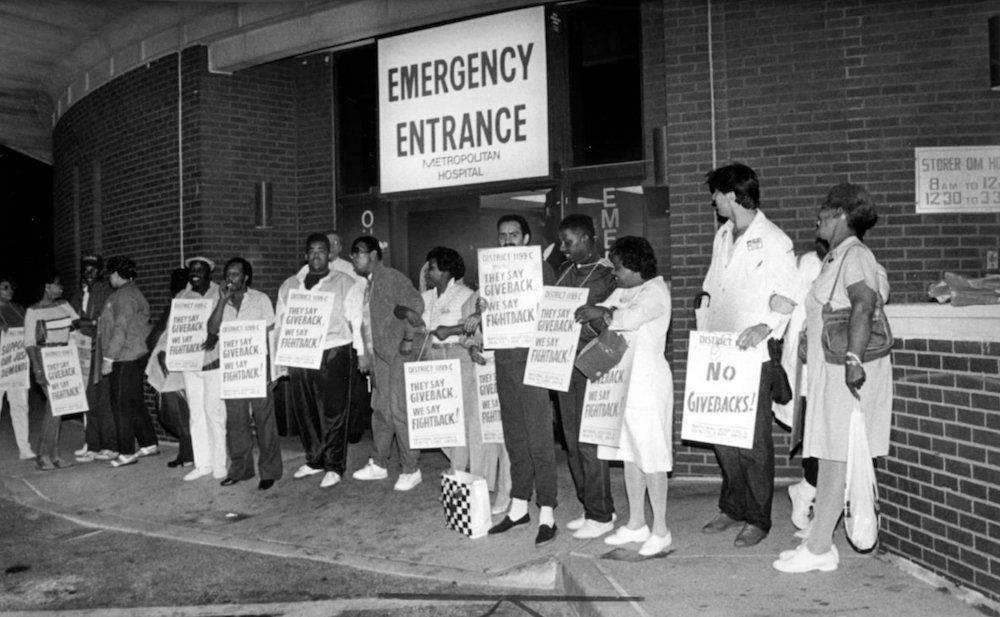JUST NOW: Metropolitan Hospital and a City That Would Not Let It…

Metropolitan Hospital and a City That Would Not Let It Rest
In the bustling, ever-evolving urban landscape, hospitals are the silent yet vital organs that keep the pulse of the city steady. They operate at the intersection of health, community, and history. One such hospital, the Metropolitan Hospital, has had a fascinating relationship with the city it serves, a relationship marked by periods of intense growth, tension, and ultimately, resilience.
A Historical Legacy in the Heart of the City
Founded in the mid-19th century, Metropolitan Hospital was born out of necessity. As New York City grew in population during the industrial age, the public health system struggled to keep up with the burgeoning needs of its citizens. The hospital, which initially focused on treating the city’s poor and immigrant populations, quickly became a cornerstone of medical care in the region.
In its early years, Metropolitan was housed in a building that was designed to handle the growing influx of patients from both the city’s wealthy residents and its working-class immigrants. The hospital was located on the East Side of Manhattan, strategically situated near the major thoroughfares, allowing it to become accessible to the diverse and often disenfranchised communities who most urgently needed care.
Through the years, Metropolitan not only grew in size but also in importance. It became a teaching hospital affiliated with prestigious medical institutions, fostering new generations of doctors and medical professionals. But it wasn’t just its medical innovations that made it significant; it was its deep-rooted connection to the city itself.
A Hospital Under Siege: The Struggles of Urbanization
The rapid urbanization of New York City during the 20th century came with its challengstate skyrocketed, bringing with it waves of gentrification. By the mid-1900s, Metropolitan Hospital found itself wedged in the midst of the changing landscape. It faced pressure from all directions: overcrowding in its facilities, an aging infrastructure that was no longer suited for modern medical practices, and an increasingly hostile urban environment.
The hospital was located in a neighborhood that was undergoing a demographic shift. What was once a working-class area became a hotbed of gentrification. Real estate developers and city planners viewed the hospital’s location as valuable, and soon, there were discussions about selling the land to make way for luxury housing or commercial spaces. As the years passed, Metropolitan became embroiled in a struggle for survival, caught between the needs of the city, the demands of urban development, and the hospital’s role in providing essential services to the underserved communities of the city.
But New York, a city that has always prided itself on its spirit of resilience, would not let Metropolitan fade into history. The city’s citizens—residents, workers, and local leaders—mobilized to keep the hospital’s doors open. The battle to save Metropolitan became a symbolic fight for the city’s soul. It wasn’t just about healthcare; it was about the very essence of what New York stood for.
A City That Would Not Rest: The Campaign to Save Metropolitan
In the late 20th century, as hospitals across the city faced the threat of closure or privatization, the people of New York mobilized. Community organizations, labor unions, and local politicians rallied together in a campaign to preserve the hospital’s mission. The fight reached its height in the 1990s, when proposals to sell the hospital’s prime real estate were seriously considered. For many, this was not just a hospital under threat—it was the lifeblood of a community, particularly the immigrant populations that relied on its services.
The movement to save Metropolitan was led by a coalition of people who understood that healthcare is a basic human right, not a commodity to be traded for profit. As protests erupted, meetings were held, and petitions were signed, the story of Metropolitan Hospital became the story of a city that refused to give up on its most vulnerable residents.
The determination to preserve Metropolitan’s legacy was not just about keeping the hospital open; it was about safeguarding the notion that New York City should serve the people, no matter their background or income. This sentiment reverberated throughout the boroughs, where many viewed Metropolitan as a last line of defense in a city that, for all its wealth and innovation, often neglected its most disenfranchised.
Renewed Hope: A New Chapter for Metropolitan Hospital
The campaign to save Metropolitan Hospital was not in vain. The efforts of local advocates, coupled with a broader recognition of the importance of accessible healthcare, led to a new chapter for the institution. Over time, the hospital underwent a series of reforms and renovations, strengthening its infrastructure and services. It also received increased support from both the public and private sectors, enabling it to continue its mission of providing essential healthcare to the people of New York.
Today, Metropolitan stands as a testament to the perseverance of both the institution and the city. The hospital has evolved, not only in terms of its medical technology but also in its capacity to adapt to the changing needs of the communities it serves. While the city’s skyline may have grown taller, and its streets may have become more crowded, Metropolitan Hospital remains a symbol of the city’s commitment to healthcare and social justice.
Conclusion: A City That Will Not Forget
Metropolitan Hospital’s journey reflects the broader struggles faced by many urban institutions that serve as lifelines to their communities. It serves as a reminder of the resilience of New York City, a place where people from all walks of life fight for their right to exist and thrive. Through economic booms and busts, demographic changes, and shifting urban landscapes, Metropolitan Hospital has endured, not just as a place of healing but as a reflection of the unyielding spirit of a city that refuses to let go of its past, present, and future.
In the end, Metropolitan Hospital is not just a building; it is the beating heart of a city that will never forget its duty to care for every one of its residents, no matter the challenges that arise. And as long as New York remains true to its roots, the hospital—and the city—will continue to fight, together, to ensure that no one is ever left behind.






